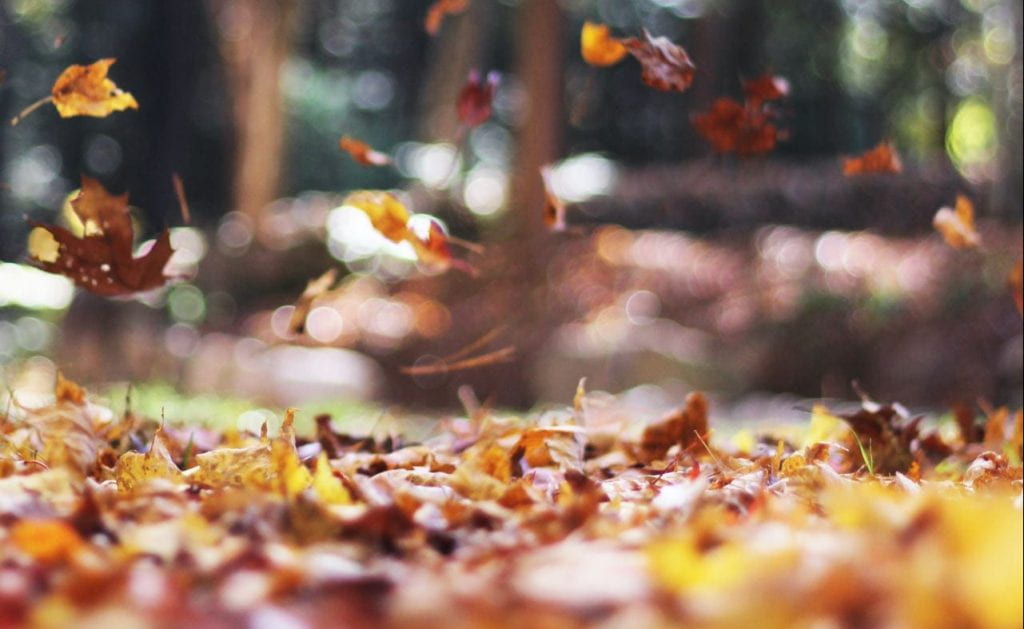Written by Office of Sustainability student associate, Faith Phillips, Class of 2024.
The foliage in autumn is one of the most exciting aspects of the season but after a few weeks, the leaves can become a nuisance in the lawn. Unknown to most people, however, many insects and invertebrates rely on fallen leaves for protection and habitat during the wintertime. These critters “overwinter” which means they live in the same place in the winter as they do in summer: they are just more hidden and less active. They rely on fallen leaves and other organic debris to insulate them from the colder weather. Invertebrates will create homes in piles of leaves that are a few inches thick because the leaves mimic their natural, warmer habitats. Plant stems hollow out when the flowering plants die in the winter which allows insects to make homes or nests in the empty cavities. Birds, chipmunks and amphibians also indirectly depend on fallen leaves since overwintering bugs are an essential winter food source. These species will dig through leaf litter for insects and larvae because other parts of their diet are scarce during this time.
There are a variety of overwintering bugs that rely on fallen leaves as a habitat. Woolly bear caterpillars tuck themselves into leaf piles for protection. Red banded hairstreaks, a kind of butterfly, lay their fallen eggs on leaves which become, in turn, the first food of caterpillars when they emerge. Yellow spotted millipedes eat humus which is the nutrient rich, organic layer of decayed plant and animal matter. American bumble bees also create nests in underground cavities, trees, or brush piles. At the end of the summer, mated queen bumble bees burrow a couple inches into the ground to hibernate for winter and an extra layer of leaves is a welcome insulation from the elements. 30% of native bees tunnel-nest which means they utilize narrow tunnels or other small spaces, such as dead wood or hollow stems, to create homes.
While it’s helpful to insects to let fallen leaves stay where they are, it doesn’t have to mean that lawns across America should be left to grow wild. The Xerces Society for Invertebrate Conservation suggests raking leaves in garden beds, around tree bases or into other designated areas. Too many leaves can kill grass but when relocated to soil, the leaves can suppress weeds, boost soil nutrition, and retain moisture. It’s all about striking the perfect balance. The Xerces Society also recommends avoiding shredding leaves with a mower as it can kill the eggs or insects that are living there. They also have free downloadable signs on their website that say, “Leave the leaves,” further advocating to neighbors and community members to adopt this practice. This fall, consider the various insects and invertebrates that rely on your fallen foliage for protection before pulling out the leaf blower. It may seem like an inconsequential choice, but the impact it will have on local insect species will be significant.
Further reading:
WashU Grounds Team Practices Sustainability
Leave the Leaves: Winter Habitat Protection, Xerces Society
